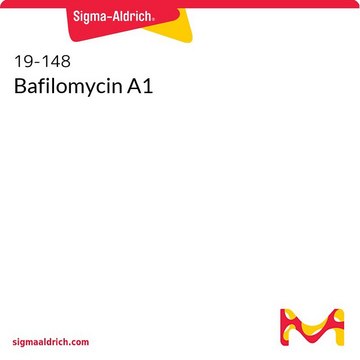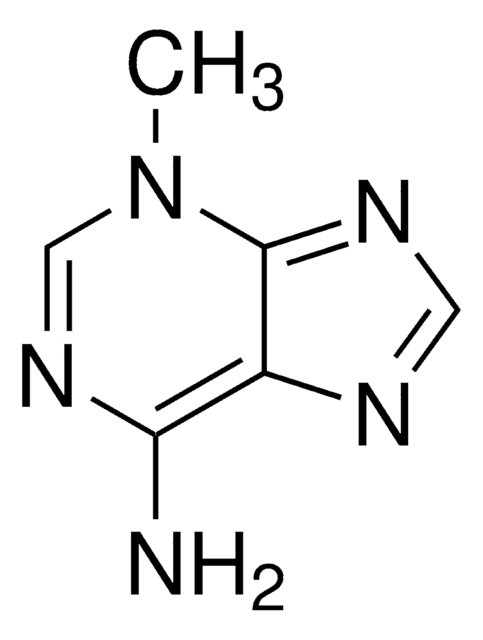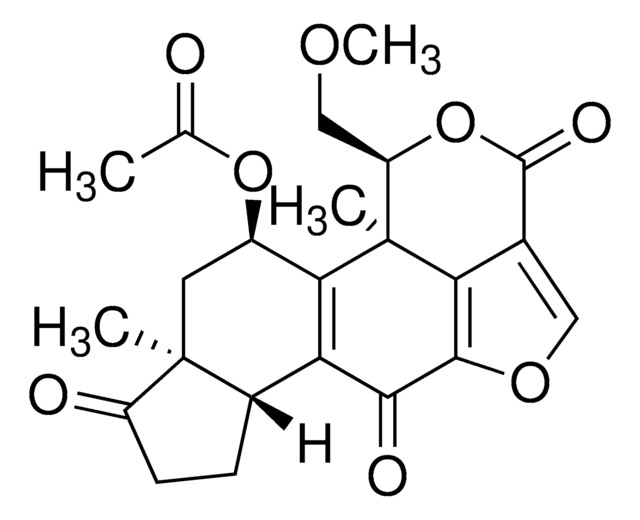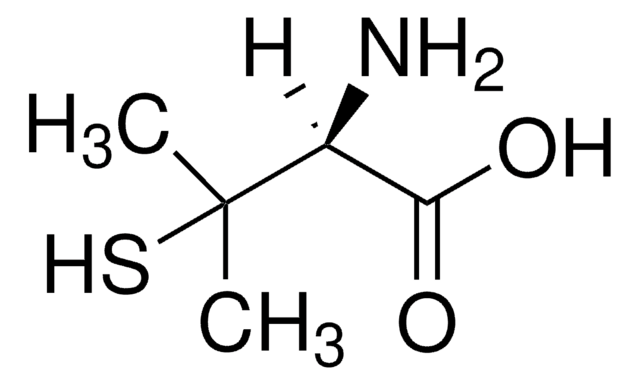SML1661
Bafilomycin A1
from Streptomyces griseus, ≥90% (HPLC), DMSO solution, V-ATPase inhibitor
Sinónimos:
BafA1
About This Item
Productos recomendados
Nombre del producto
Bafilomycin A1 Ready Made Solution, 0.16 mM in DMSO, from Streptomyces griseus
biological source
Streptomyces griseus
Quality Level
form
DMSO solution
concentration
0.16 mM in DMSO
shipped in
dry ice
storage temp.
−20°C
SMILES string
O1[C@@H]([C@H]([C@@H](C[C@]1(O)[C@H]([C@H](O)[C@@H]([C@H]2OC(=O)\C(=C\C(=C\[C@H]([C@H]([C@H](C\C(=C\C=C\[C@@H]2OC)\C)C)O)C)\C)\OC)C)C)O)C)C(C)C
InChI
1S/C35H58O9/c1-19(2)32-24(7)27(36)18-35(40,44-32)26(9)31(38)25(8)33-28(41-10)14-12-13-20(3)15-22(5)30(37)23(6)16-21(4)17-29(42-11)34(39)43-33/h12-14,16-17,19,22-28,30-33,36-38,40H,15,18H2,1-11H3/b14-12+,20-13+,21-16+,29-17-/t22-,23+,24-,25-,26-,27+,28-,30-,31+,32+,33+,35+/m0/s1
InChI key
XDHNQDDQEHDUTM-JQWOJBOSSA-N
General description
Application
- as an endosome acidification inhibitor to study the importance of endosome acidification in the extracellular vesicle uptake and cytosolic release of stably expressing NanoLuc luciferase-tagged Hsp70 (NLuc-Hsp70) in HeLa cells
- as a vacuolar-type H+-ATPase (V-ATPase) inhibitor to study its effects on autophagic turnover of light chain 3 β (LC3-II) in mice
- as an autophagy inhibitor to study its effects on primary rat liver sinusoidal endothelial cells (LSECs) defenestration
Biochem/physiol Actions
Other Notes
Storage Class
10 - Combustible liquids
wgk_germany
WGK 1
flash_point_f
188.6 °F - closed cup
flash_point_c
87 °C - closed cup
Elija entre una de las versiones más recientes:
¿Ya tiene este producto?
Encuentre la documentación para los productos que ha comprado recientemente en la Biblioteca de documentos.
Los clientes también vieron
Nuestro equipo de científicos tiene experiencia en todas las áreas de investigación: Ciencias de la vida, Ciencia de los materiales, Síntesis química, Cromatografía, Analítica y muchas otras.
Póngase en contacto con el Servicio técnico












